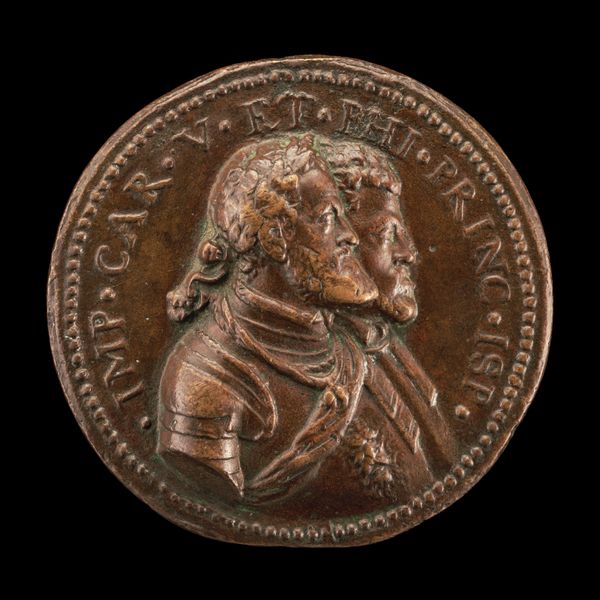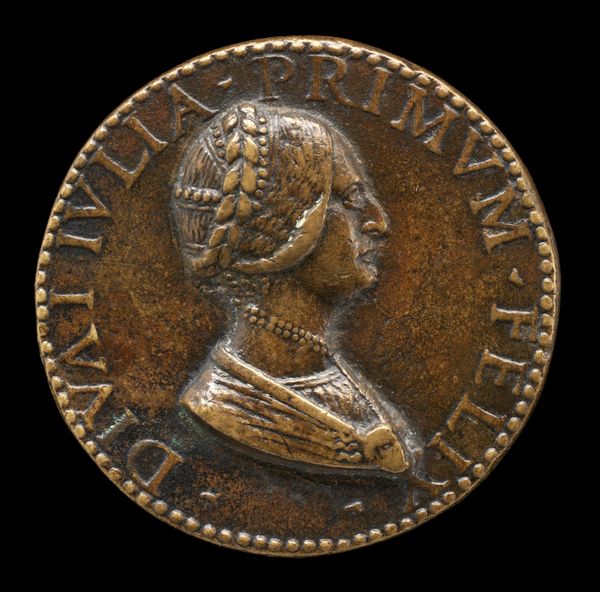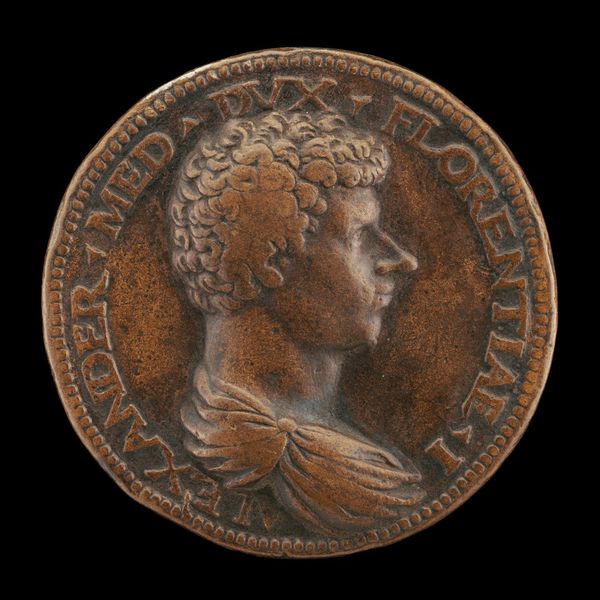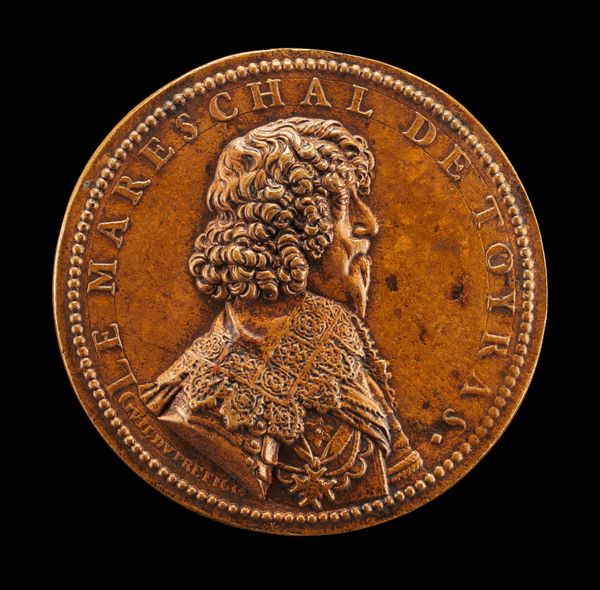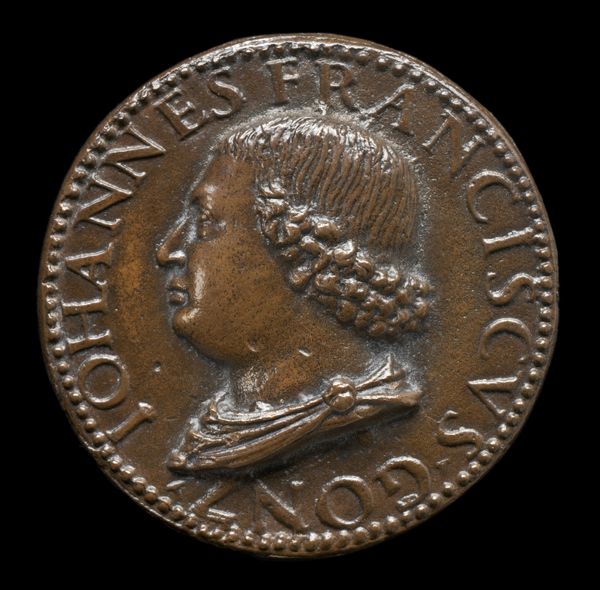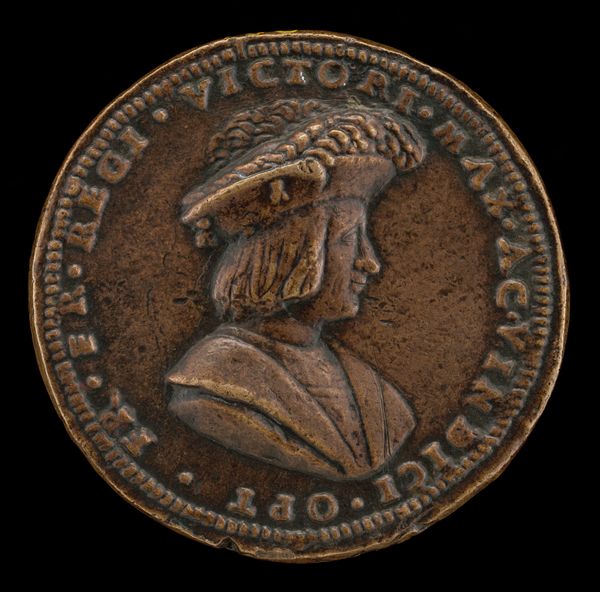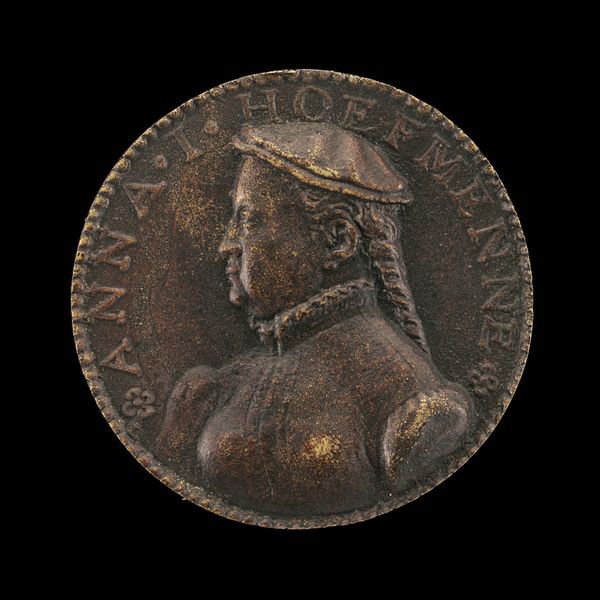![Francesco II Gonzaga, 1466-1519, 4th Marquess of Mantua 1484 [obverse] by Gian Marco Cavalli](/_next/image?url=https%3A%2F%2Fd2w8kbdekdi1gv.cloudfront.net%2FeyJidWNrZXQiOiAiYXJ0ZXJhLWltYWdlcy1idWNrZXQiLCAia2V5IjogImFydHdvcmtzL2NhYmZjYmIwLTY4OWMtNGVjMi05NTczLWI3MzM3OTMwYWE2ZC9jYWJmY2JiMC02ODljLTRlYzItOTU3My1iNzMzNzkzMGFhNmRfZnVsbC5qcGciLCAiZWRpdHMiOiB7InJlc2l6ZSI6IHsid2lkdGgiOiAxOTIwLCAiaGVpZ2h0IjogMTkyMCwgImZpdCI6ICJpbnNpZGUifX19&w=3840&q=75)
Francesco II Gonzaga, 1466-1519, 4th Marquess of Mantua 1484 [obverse] c. 1484 - 1506
0:00
0:00
intaglio, relief, bronze, sculpture
#
medal
#
intaglio
#
sculpture
#
relief
#
bronze
#
11_renaissance
#
sculpture
#
italian-renaissance
Dimensions: overall (diameter): 3.22 cm (1 1/4 in.) gross weight: 19.43 gr (0.043 lb.) axis: 7:00
Copyright: National Gallery of Art: CC0 1.0
Curator: Here we have a bronze medal featuring Francesco II Gonzaga, the 4th Marquess of Mantua. It was crafted sometime between 1484 and 1506 by Gian Marco Cavalli. Editor: It has such an intriguing patina. I find myself drawn to the almost pensive expression on his face. He seems burdened, even melancholy. It also strikes me how intimate this small object feels. Curator: That's a lovely observation! These portrait medals, quite popular during the Renaissance, served not only as commemorative objects but also as statements of power and status. It’s interesting that you pick up on a potential "burden," as Gonzaga led Mantua through numerous wars and political machinations. Editor: Exactly, so the idealized Renaissance aesthetic, like his perfectly coiffed hair, clashes intriguingly with the weariness hinted at around his eyes and the slight downturn of his lips. How deliberate was the creation of this sense of conflict within him? It begs the question of how he grappled with his public image and private feelings. It invites questions regarding masculinity during this time and how those codes could conflict with the realities of being a ruler. Curator: That tension is wonderfully palpable. Think about who Cavalli, the artist, might have been trying to appeal to with these features, maybe future leaders, a wider network to maintain relations. As the head of one of the wealthiest Northern Italian states during a turbulent period of warfare and shifting alliances, Francesco certainly understood the importance of legacy. I would bet, despite how weighty the position he might have held, that the scale here contributes to its own intimacy. Editor: That scale! I love the idea of such power contained in such a small, holdable, object. As for legacy, these medals could circulate amongst other prominent families, even serve as diplomatic gifts. Each tiny bronze object carries all this loaded information! I imagine him, clutching it tight, or others receiving the effigy of Gonzaga like an intimate message about the holder and distributor of this item. Curator: Indeed! Imagine how many hands this could have passed through and what ideas each viewing conjured. For me, thinking of these questions brings history alive, offering more space to meditate and engage on an otherwise muted image. Editor: I concur! Examining artworks like this offers such potential to decode complex narratives around power, legacy, and humanity—the questions outweigh any singular, reductive historical fact we could offer. What’s more tantalizing than that?
Comments
No comments
Be the first to comment and join the conversation on the ultimate creative platform.

